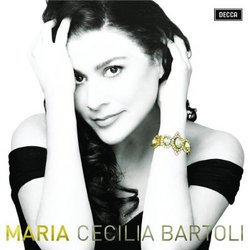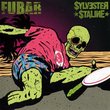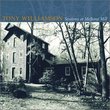| All Artists: Cecilia Bartoli Title: Cecilia Bartoli: Maria Members Wishing: 1 Total Copies: 0 Label: Decca Records Release Date: 8/26/2008 Genre: Classical Style: Opera & Classical Vocal Number of Discs: 1 SwapaCD Credits: 1 UPCs: 028947590781, 0028947590781 |
Search - Cecilia Bartoli :: Cecilia Bartoli: Maria
 | Cecilia Bartoli Cecilia Bartoli: Maria Genre: Classical
Cecilia Bartoli revisits the early Romantic era of Rossini, Bellini and their contemporaries and views the Bel canto glory days through the eyes of Maria Malibran: Romantic icon, Bel Canto muse, and the most extraordinary ... more » |
Larger Image |
CD DetailsSynopsis
Album Description Cecilia Bartoli revisits the early Romantic era of Rossini, Bellini and their contemporaries and views the Bel canto glory days through the eyes of Maria Malibran: Romantic icon, Bel Canto muse, and the most extraordinary opera star of her time. Maria features 8 world premiere recordings including the prayer `Se il mio desir...Cedi al duol' from the long lost opera Irene by Pacini, and the aria `E non lo vedo...Son regina' by Maria's father, the famous Rossini tenor Manuel Garcia. Bartoli also presents the London version of Mendelssohn's `Infelice' for voice, violin solo and orchestra, where she duets with Maxim Vengerov. The album also includes popular favorites, such as Bellini's `Casta Diva' from Norma. Maria features an incredible variety of music. Mellifluous Bel canto delights are contrasted with regional flavors from around the world: from Spanish flamenco to Tyrolienne yodeling. The album exhibits Cecilia Bartoli singing in four languages: Italian, Spanish, French and English. She is joined by the period practice Orchestra La Scintilla, led by Hungarian conductor Adam Fischer. Similar CDs
|
CD ReviewsOF DEFINITE INTEREST TO ADMIRERS OF BEL CANTO L. Mitnick | Chicago, Illinois United States | 11/27/2008 (4 out of 5 stars) "At the outset, I must say that I much this CD format to the "limited edition" that Decca originally issued this recital with. I disdain those CD "books" where the disks are shoved into those cardboard slots, which puts ugly marks on the playing surface of the disk. Why companies continue to package some of their CDs in such a manner is totally beyond me. At any rate, I must admit that I am much impressed with some of the tracks on this Bartoli recital. Maria Malibran was the "Maria Callas" of her day --- flamboyant, incredibly talented, larger than life, a brilliant performer, and she was the owner of a truly unique vocal endowment. The term "mezzo soprano" did not exist during her time. Sopranos were sopranos...period. The high E flats which divas like Callas, Sutherland, Sills, Dessay (as well as less endowed sopranos)put into operas like "Lucia", "Sonnambula", etc, were not originally written. They were interpolated into these operas much later as an exhibition display by sopranos fortunate enough to have those stratospheric top notes. It is quite probable that a voice such as Bartoli's would have been considered a soprano during the time of Rossini, Bellini, and Donizetti. What Bartoli is doing here is somewhat of a restoration. Her "Ah,non credea mirarti" (sung with great fluidity) and "Ah, non giunge" from "La Sonnambula" is sung in the same keys as that of Callas and Sutherland, but instead of taking the cabaletta and surging it upwards, Bartoli embellishes downwards (her "Ah, non giunge" is positively electrifying - with downward interpolations never before encountered, and at machine gun speed!), and she is highly successful, to my ears anyway. I find the "Puritani" scene less successful ("Qui la Voce" is sung in the key of C major --- which is a couple of steps lower than the original E flat major) due to a rather pallid cabaletta and the lack of any type of climatic top note (very similar to Muti's complete "Puritani" with Caballe and Kraus. Norma's "Casta Diva", however, is sung in the regular key of F, and Bartoli sings it beautifully. The cabaletta is omitted. The rest of the selections comprise vocal pieces of Hummel, Mendelssohn, Halevy, Pacini and Rossi,
all of which were apparently Malibran specialties. They are highly attractive pieces, and they give Bartoli the opportunity to display her ample vocal gifts. This recording has finally made me somewhat aware of how such legendary divas like Pasta and Malibran (neither of whom possessed a high E flat) performed and made such successes of operas like "Norma", "Sonnambula", and so many other bel canto operas. For that reason alone, there is reason to value this very interesting recording. Finally, a new recording of "Sonnambula" starring Bartoli and Juan Diego Florez is just around the corner. I can't wait. " |

 Track Listings (17) - Disc #1
Track Listings (17) - Disc #1


